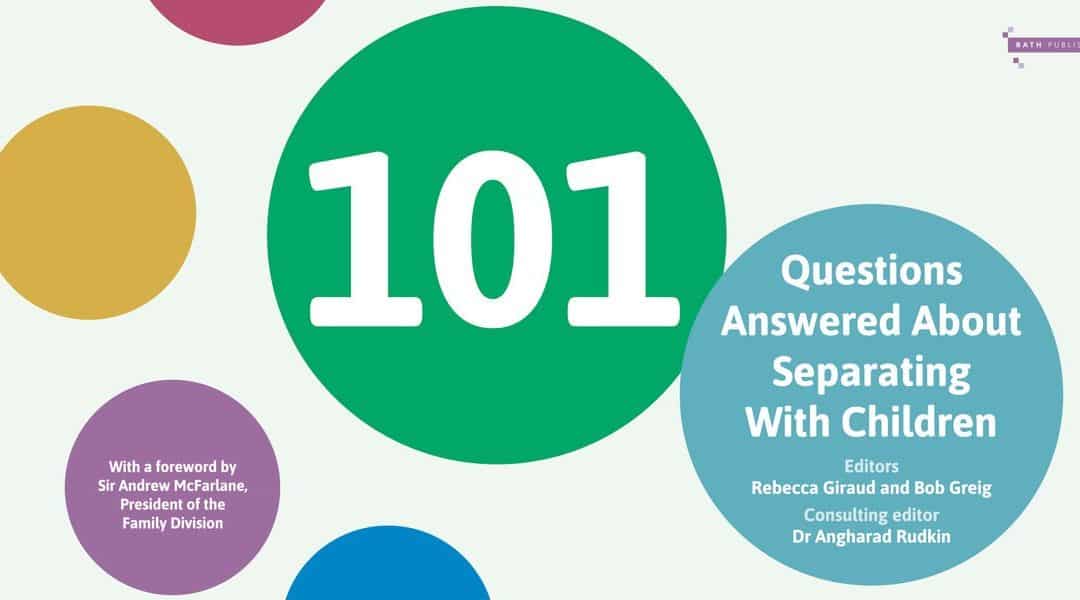This is a guest post from Emily Ward. Emily is a barrister based at Broadway House Chambers and is Deputy Head of the Family Team. She practises in all areas of family law, and has a particular interest in family and matrimonial finance. She tweets as @E_V_Ward
I was lucky enough to get my hands on a copy of this book, edited by Rebecca Giraud and Bob Greig alongside consulting editor Dr Angharad Ruskin. I have seen many posts online about the book and how useful others have found it, so was looking forward to reading it myself. Sir Andrew McFarlane, the President of the Family Division, and the author of the foreword, says as follows:
‘A parent in a family case who is hungry for hard information, sound realistic advice and a ‘feel’ for the court process will find much to feed on in these pages; they may also consume them knowing that they have been compiled from a gender-neutral perspective, with the aim simply of providing practical and legally accurate information without any underlying agenda.’
Having consumed the book from cover to cover, ‘I agree’ (I have always wanted to say that following a view from the President).
The format of the book is quite simple. It contains 101 questions that have been asked or emailed to OnlyMums and OnlyDads CIC. Each question is supported by an answer provided by an expert in their field, be that a solicitor, barrister, mediator or other professional. In addition to the 101 questions and answers, the book is filled with useful information, ranging from ‘Must Read’ articles to details of useful organisations, including NSPCC, Relate and Samaritans. Also scattered throughout are quotations, one-liners and ‘top tips’ from an array of individuals, including parents and therapeutic personnel. All good so far.
To begin – ‘why this books matters’- the book opens with wise words from Dr Angharad Ruskin in relation to ‘what does it mean to put children first’, followed by a thoughtful piece from HHJ Stephen Wildblood QC, which includes important sentiments which strike a chord with the aims and ethos of the book:
‘All life is temporary, at the end of the day and when our lives end, we will be remembered most for how we have treated other people – especially our children, because they are the next generation.’
The book then begins the journey from ‘the first days’ (with questions such as ‘is it over?’) through to actual separation, providing the reader with practical tips and food for thought, including how to choose a solicitor; decisions to move out of the family home; key information about the law in relation to divorce; and, crucial stuff concerning the myth of the ‘common law marriage.’
The sections in relation to children(questions 11-24) and domestic violence(questions 80-90) cover many common questions, which I know I have been asked in practice at least once, such as: ‘should we ask the children where they want to live, or is that unfair’ or ‘is four years old too young to stay with dad overnight’ and ‘what are the signs of coercive control.’ The answers to those important questions are clear and provide a base for the reader to then consider their options and take appropriate steps as they see fit. There is a dedicated section to ‘parental alienation’ which tries to tackle often tough questions in relation to this sensitive and important topic.
Questions 25 to 36 allow the reader to canter through some key questions and answers in relation to finances and housing, which include helpful explanations of certain forms and their purpose (eg: Form E). Freezing injunctions, pre and post nuptial agreements, child maintenance and spousal maintenance are also included, to name a few, as are pensions and pension sharing. There are also some top tips to assist in the planning process of moving from a two income household to a one income household, something which is often a major worry for separating parents.
Importantly the book provides key information in relation to going to court and the role, or ‘profile’, of key legal professionals involved in the court process, as well as alternatives to court. Questions 37 to 46 focus on ‘Mediation’ and questions 47-48 on ‘Arbitration’ and furnish the reader with tips on how to prepare for mediation, including child mediation.
The content of the book is fairly far reaching and includes information, and questions and answers relating to ‘parenting from afar’, ‘grandparents and the wider family’ and ‘money saving tips when employing professionals’. I have learned of new organisations from the ‘advice and support’ section (eg: Match, Galop and Storybook Dads, a service which burns onto discs stories for children recorded by imprisoned parents) which will assist me in assisting my clients going forward, as I am sure the book will assist its readers. And the glossary at the conclusion of the book is a genius idea, as in the legal world jargon and acronyms are often, understandably, meaningless to lay clients and people navigating the court system on their own without the assistance of a lawyer.
Whilst the book will not answer every question or provide every answer to every reader, it is a useful starting place. Overall the book, from cover to cover, is easy to navigate, is written in plain English and pulls together an array of knowledge and information, and, to quote the President again, ‘compiled from a gender-neutral perspective, with the aim simply of providing practical and legally accurate information without any underlying agenda.’ It is a fine example of the family law community, be that legal or other professionals, coming together to provide a valuable resource for separating parties and separating parents.
